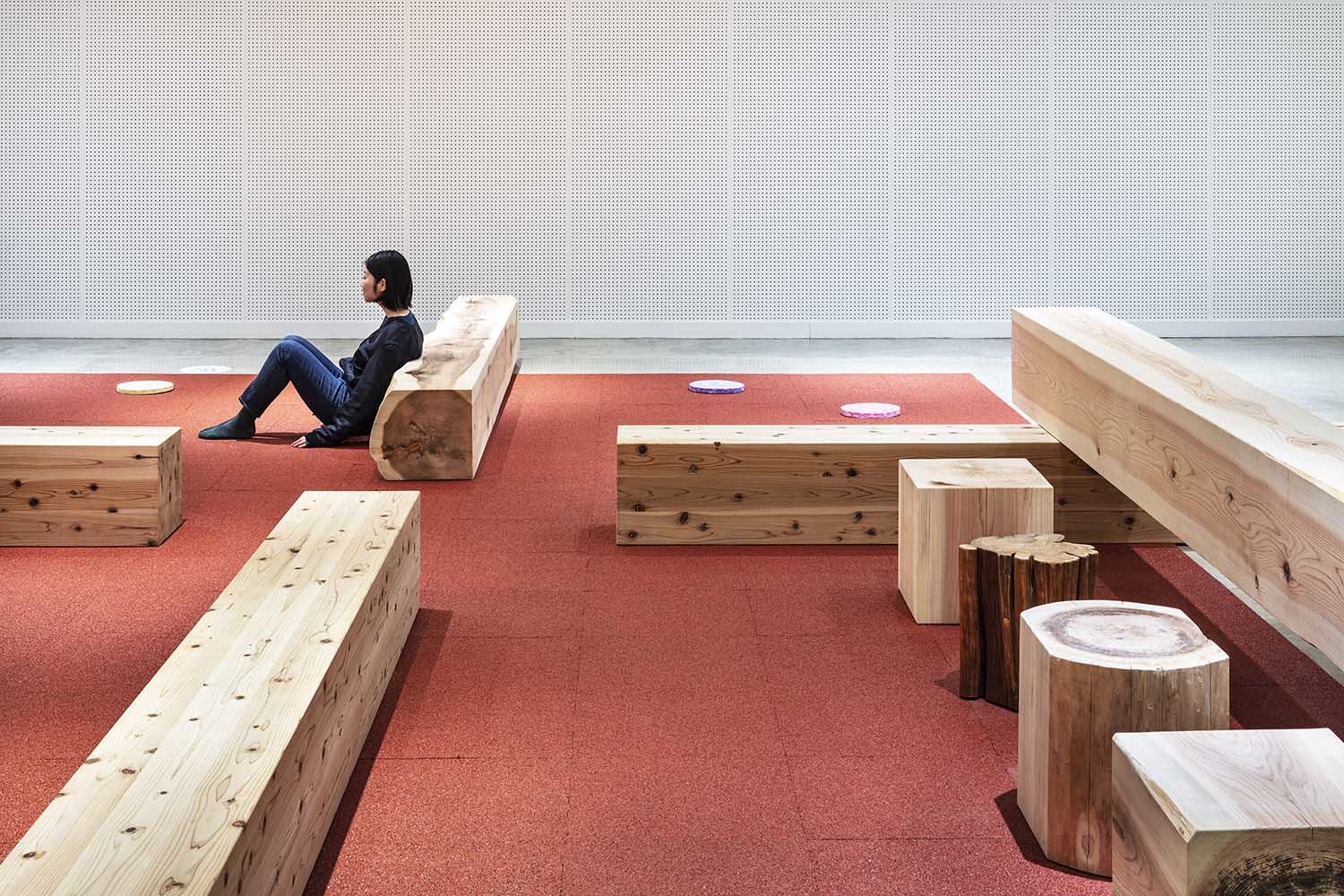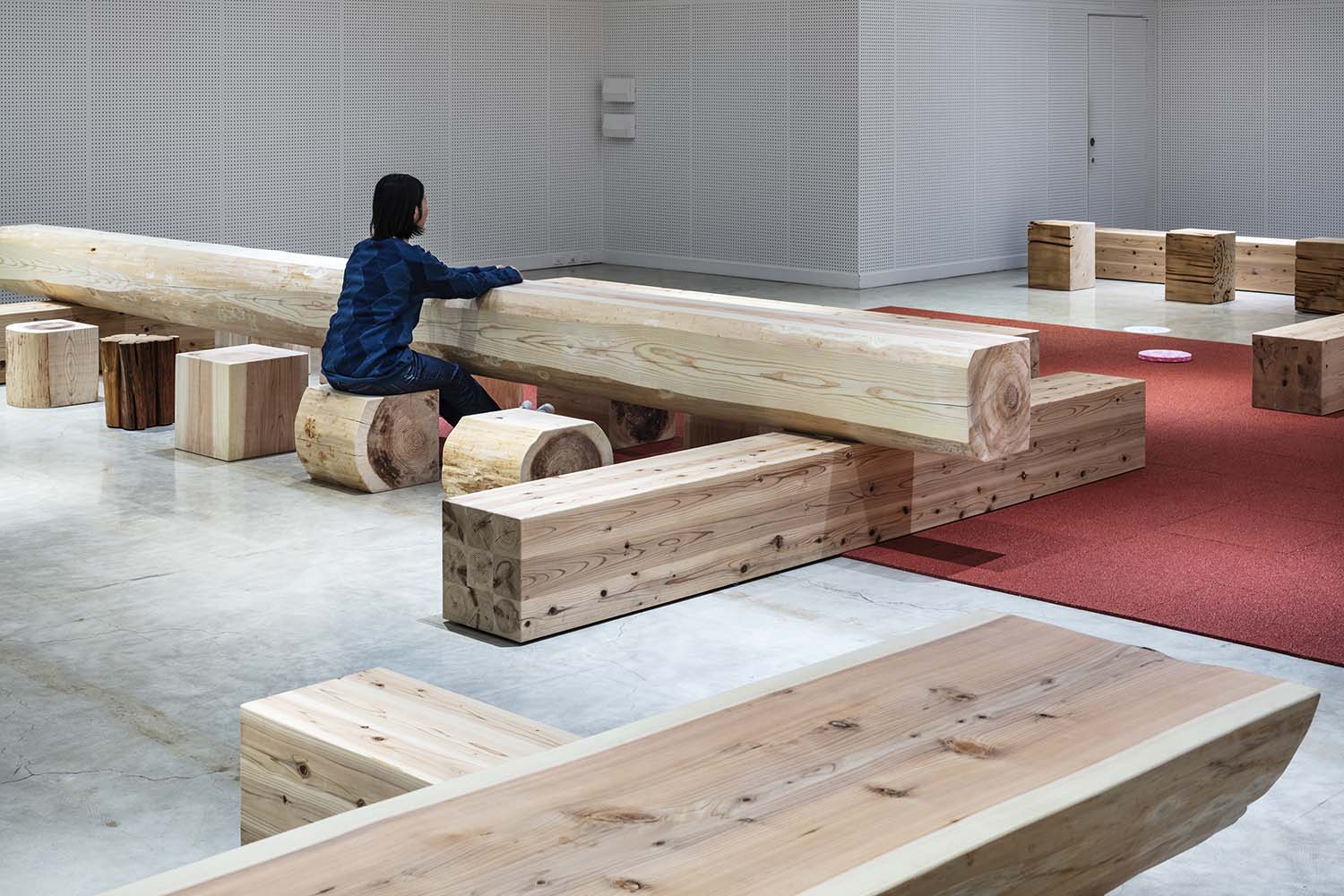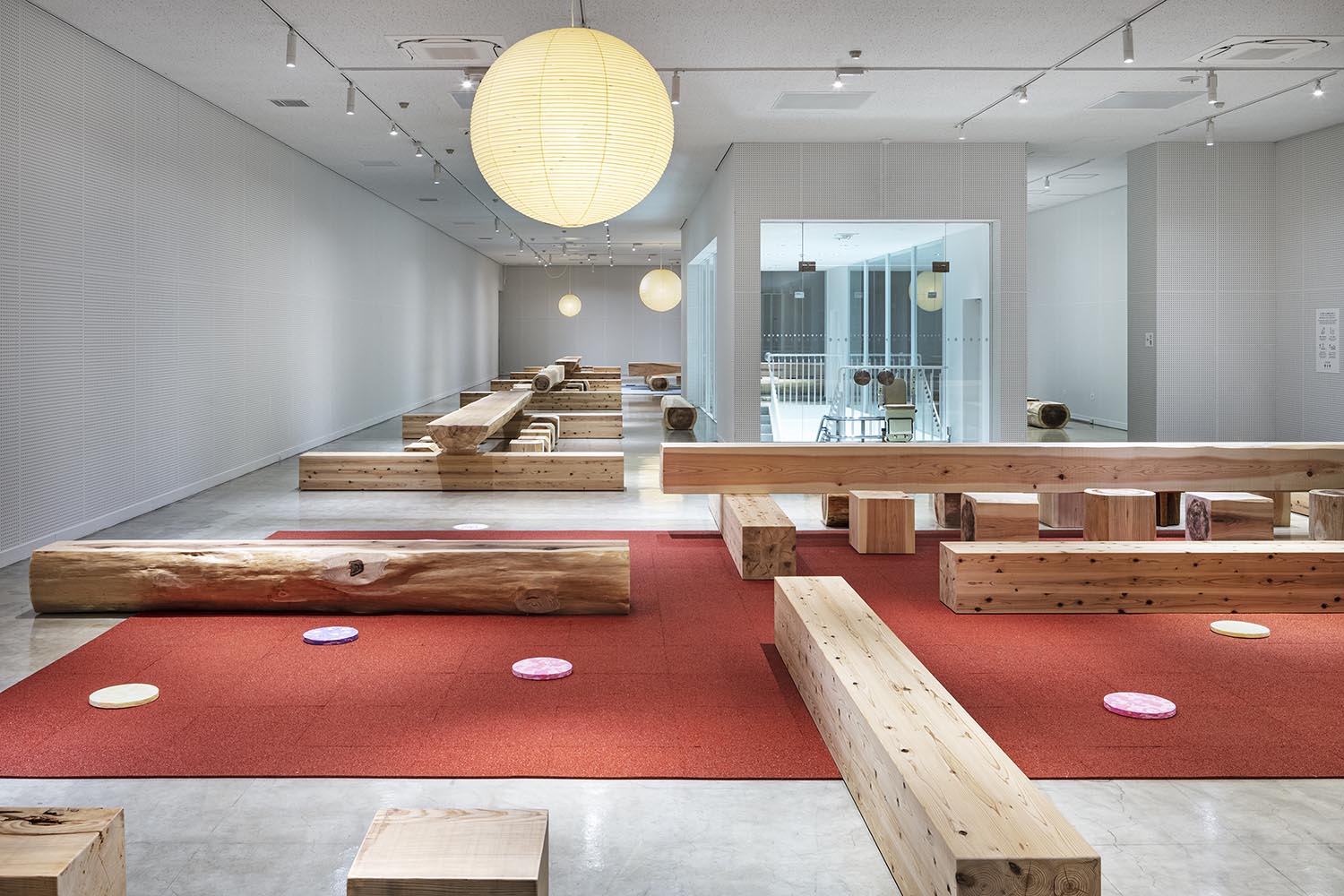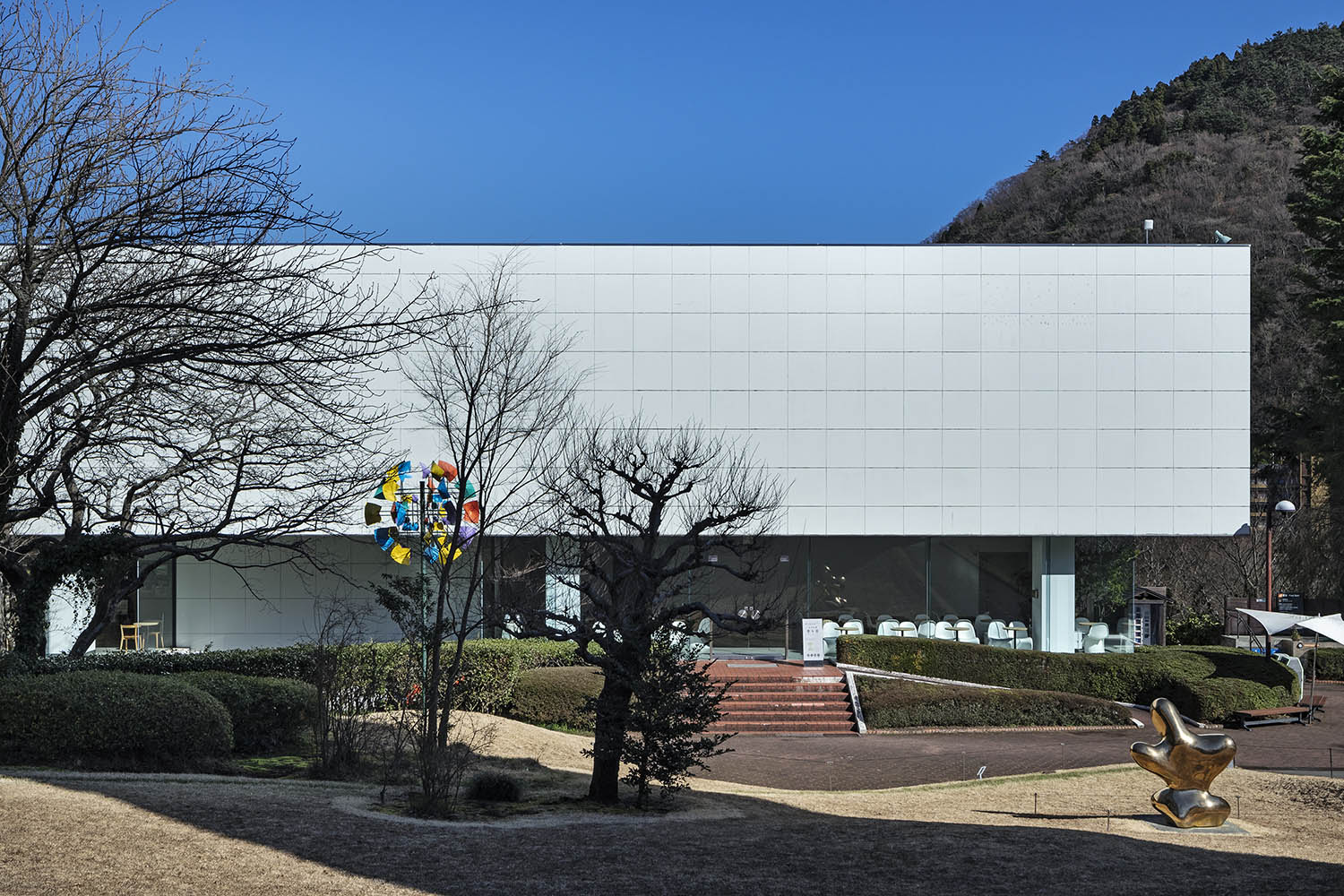Hakone Open Air Museum’s Covered Gallery Redesigned by TORAFU Architects
For their installation, the architects decided to promote interaction between visitors and furniture made from cedar, a wood from the region.

Hakone Open Air Museum - Torafu Architects © Kenta Hasegawa
The Hakone Open Air Museum is the first of its kind to have opened in Japan, dating back to 1969. Visitors can discover a multitude of interactive works and sculptures by Japanese and international artists alike, such as Taro Okamoto and Niki de Saint Phalle. When the renovation of the covered gallery was being planned, the architecture firm TORAFU ARCHITECTS suggested linking art and natural materials, in a nod to nature that is of particular importance in this region. The gallery, spread over two floors, originally had a cafe on the ground floor and a gallery on the first floor, but nowhere for visitors to take a break during their visit.
Installations to make one’s own
As a result, the firm redesigned everything, turning the first floor into a vast, pared down space containing a large number of cedar logs, a type of wood found in the Hakone mountains, that visitors can use as they wish. ‘At this museum, visitors can’t touch the works displayed outside’, the architects explain. ‘But these cedar blocks were chosen as a material they can interact with, even in an unconscious way.’
They are set out to act like benches in the space, where visitors can sit and take a break, or like long tables surrounded by log stools where they can have lunch. TORAFU ARCHITECTS also created spaces covered with large rubber carpets where visitors can lie down before continuing to explore the museum.
Wood is a material integral to the firm’s projects, and they design boutiques for brands such as Aesop and Issey Miyake, among many others. The importance of wood is clear in their renovation of the lobby of the Ginza 8 gallery in Tokyo, which is furnished with wooden benches, or the fashion boutique Minä Perhonen Neutraali, where a wooden island occupies the centre of the space.
The Hakone Open Air Museum was redesigned by TORAFU ARCHITECTS. Information about current exhibitions is available on their website.
Address: Ninotaira 1121, Hakone-machi, Ashigarashimo-gun, Kanagawa Prefecture 250-0493

Hakone Open Air Museum - Torafu Architects © Kenta Hasegawa

Hakone Open Air Museum - Torafu Architects © Kenta Hasegawa

Hakone Open Air Museum - Torafu Architects © Kenta Hasegawa

Hakone Open Air Museum - Torafu Architects © Kenta Hasegawa

Hakone Open Air Museum - Torafu Architects © Kenta Hasegawa
TRENDING
-
Hiroshi Nagai's Sun-Drenched Pop Paintings, an Ode to California
Through his colourful pieces, the painter transports viewers to the west coast of America as it was in the 1950s.

-
The Tattoos that Marked the Criminals of the Edo Period
Traditional tattoos were strong signifiers; murderers had head tattoos, while theft might result in an arm tattoo.

-
David Bowie Dressed by Kansai Yamamoto
The English singer was strongly influenced by 'kabuki' theatre and charged the Japanese designer with creating his costumes in the 1970s.

-
Paris, Tokyo: Robert Compagnon
With his co-chef and talented wife, Jessica Yang, Robert Compagnon opened one of the top new restaurants in Paris: Le Rigmarole.
 3:31
3:31 -
Rituals of Ancient Gay Shunga Erotica
Shunga was prolific in Japan during the Edo period, with ‘nanshoku’ referring to the depiction of homosexual erotica.





